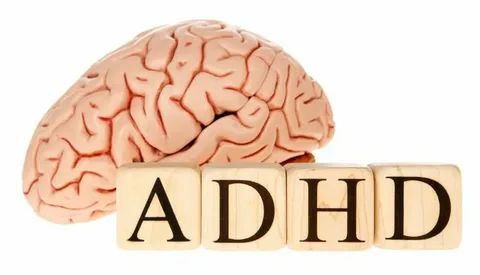
Attention Deficit Hyperactivity Disorder (ADHD) and anxiety often coexist, creating unique challenges for individuals dealing with both conditions. Managing these dual diagnoses requires a comprehensive approach that addresses symptoms from both perspectives. This article explores the relationship between ADHD and anxiety, effective coping strategies, and practical tips for improving daily life.
Understanding ADHD and Anxiety
ADHD is a neurodevelopmental disorder characterized by difficulties with attention, hyperactivity, and impulsivity. It affects both children and adults, impacting various aspects of life including school, work, and relationships. Individuals with ADHD may struggle with staying organized, maintaining focus, and managing time effectively.
Anxiety, on the other hand, is a common mental health condition characterized by feelings of worry, fear, and apprehension. It can manifest as generalized anxiety disorder (GAD), social anxiety disorder, or specific phobias. Anxiety often exacerbates the symptoms of ADHD, making it harder to concentrate and manage daily tasks.
The Link Between ADHD and Anxiety
Research indicates a significant overlap between ADHD and anxiety disorders. Many individuals with ADHD experience heightened levels of anxiety due to the challenges associated with ADHD symptoms. For example, the inability to focus or complete tasks can lead to feelings of frustration and worry, contributing to anxiety symptoms.
Conversely, anxiety can mimic or exacerbate ADHD symptoms. For instance, individuals with anxiety may appear restless or have difficulty concentrating, which could be mistaken for ADHD-related hyperactivity or inattention.
Challenges of Dual Diagnosis
Living with both ADHD and anxiety presents several challenges:
- Impaired Focus and Productivity: Difficulty concentrating due to ADHD symptoms can be further impaired by anxious thoughts and worries.
- Social and Emotional Implications: Both conditions can impact relationships and self-esteem, making it challenging to interact socially or perform well in academic or professional settings.
- Treatment Complications: Treating one condition may affect the other, requiring careful management and coordination between healthcare providers.
Effective Coping Strategies
Managing dual diagnoses of ADHD and anxiety involves adopting strategies that address symptoms from both perspectives. Here are some effective coping strategies:
- Education and Understanding: Learn about ADHD and anxiety to better understand how they affect you or your loved one. Knowledge empowers individuals to recognize symptoms and seek appropriate support.
- Structured Routine: Establishing a structured daily routine can help manage ADHD symptoms such as impulsivity and disorganization. Set specific times for activities like work, meals, exercise, and relaxation.
- Mindfulness and Relaxation Techniques: Practices like mindfulness meditation, deep breathing exercises, and progressive muscle relaxation can reduce anxiety symptoms and improve focus.
- Physical Activity: Regular exercise not only boosts mood and energy levels but also helps in managing ADHD symptoms by reducing hyperactivity and impulsivity.
- Cognitive Behavioral Therapy (CBT): CBT techniques can be effective in treating both ADHD and anxiety. It focuses on changing negative thought patterns and developing coping strategies.
- Medication Management: For some individuals, medication may be prescribed to manage symptoms of ADHD and anxiety. It’s essential to work closely with a healthcare provider to find the right medication and dosage.
- Support Networks: Joining support groups or engaging with peers who understand your challenges can provide valuable emotional support and practical advice.
- Healthy Lifestyle Choices: Adequate sleep, a balanced diet, and limiting caffeine intake can contribute to overall well-being and help manage symptoms of both ADHD and anxiety.
- Time Management Strategies: Break tasks into smaller, manageable steps, prioritize responsibilities, and use tools like planners or apps to stay organized.
- Self-Care Practices: Take time for activities you enjoy, practice relaxation techniques, and prioritize self-care to reduce stress and anxiety levels.
Practical Tips for Daily Life
- Create a Quiet Workspace: Minimize distractions to enhance focus and productivity.
- Use Visual Reminders: Post-it notes, calendars, and digital reminders can help with memory and task management.
- Practice Assertiveness: Communicate your needs clearly and assertively in personal and professional settings.
- Set Realistic Goals: Break larger tasks into smaller, achievable goals to maintain motivation and reduce anxiety.
Conclusion
Managing ADHD and anxiety simultaneously requires a holistic approach that addresses both conditions’ unique challenges. By implementing effective coping strategies, seeking appropriate support, and making lifestyle adjustments, individuals can improve their quality of life and effectively manage symptoms. With proper management and support, living well with dual diagnoses is possible, empowering individuals to thrive in their daily lives.
In conclusion, navigating ADHD and anxiety together involves understanding their interplay, adopting tailored coping strategies, and embracing a supportive environment conducive to personal growth and well-being.